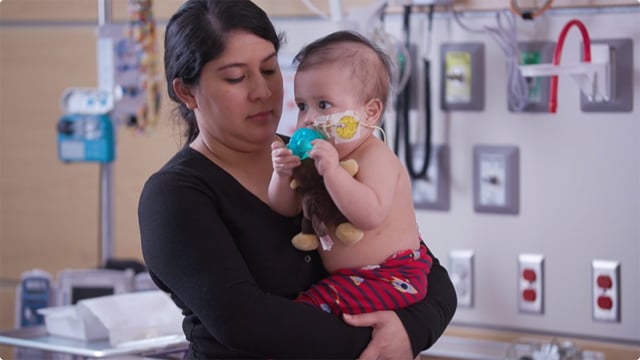What Is a Nasogastric Tube (NG Tube)?
A nasogastric (NG) tube is a thin, soft tube that goes in through the nose, down the throat, and into the stomach. They're used to feed formula to a child who can't get nutrition by mouth. Sometimes, kids get medicine through the tube.
NG tubes are used for short periods of time, usually a few weeks to months.
Who Needs an NG Tube?
Kids need NG tubes when they can't eat and drink enough to stay healthy. This may happen when:
- a baby is born early
- a child has trouble swallowing
- a child has a digestive problem or inflammation of the digestive tract
- a child needs extra calories
-

Getting an NG-Tube
Find out what to expect when your child needs a nasogastric tube.
What Happens During NG Tube Placement?
In the hospital, a health care provider trained in placing NG tubes can insert the tube at a child's bedside. When they do this short procedure, they:
- Measure the tube against the child to be sure it's the right length.
- Lubricate the tube with water or a special jelly.
- Insert the tube into a nostril and guide it down the esophagus, into the stomach.
- Check to make sure the NG tube is placed correctly.
- Tape the tube to the child's cheek to hold it in place.
Are There Any Risks From NG Tube Placement?
Inserting the tube into the wrong place is a risk of NG tube placement. That's why it's important to be sure the end of the tube reaches into the stomach.
How Do I Care for the NG Tube at Home?
If your child has an NG tube, it's normal to feel a little bit nervous about it at first. But soon you'll feel confident about giving feeds and changing it.
Here are some tips:
- Always wash your hands well before caring for the NG tube or giving a feed or medicine.
- Always keep the feeding set tubing out of the way of infants and children. There is a risk that the feeding set tubing can get wrapped around a child’s neck, which could lead to strangulation or death.
- Check that the tube is placed into the stomach and is working well before you use it.
- Know what to do if the tube gets blocked or comes out.
- Keep the area around your child's nose clean using gauze pads and warm water.
- Check the skin around the nose regularly for signs of irritation or infection, like redness, tenderness, warmth, swelling, or drainage.
- Switch nostrils each time you change the NG tube.
When Should I Call the Doctor?
Call the care team if your child has any of these symptoms:
- nausea
- diarrhea
- a swollen or hard belly
- bleeding from the nose or mouth
- vomiting
- belly pain
- blood in the stool (poop)
- a fever
- a cough
- fussiness or irritability
If your child has trouble breathing or is choking:
- Stop the feed.
- Remove the tube.
- Call your care team.
- Call 911 if the problems continue.


